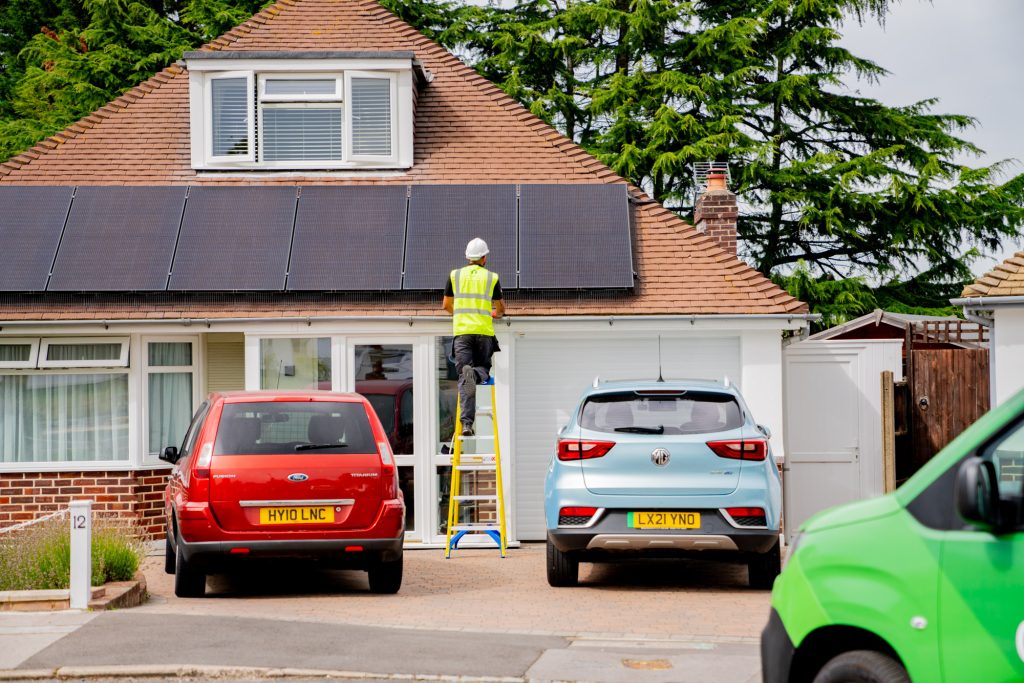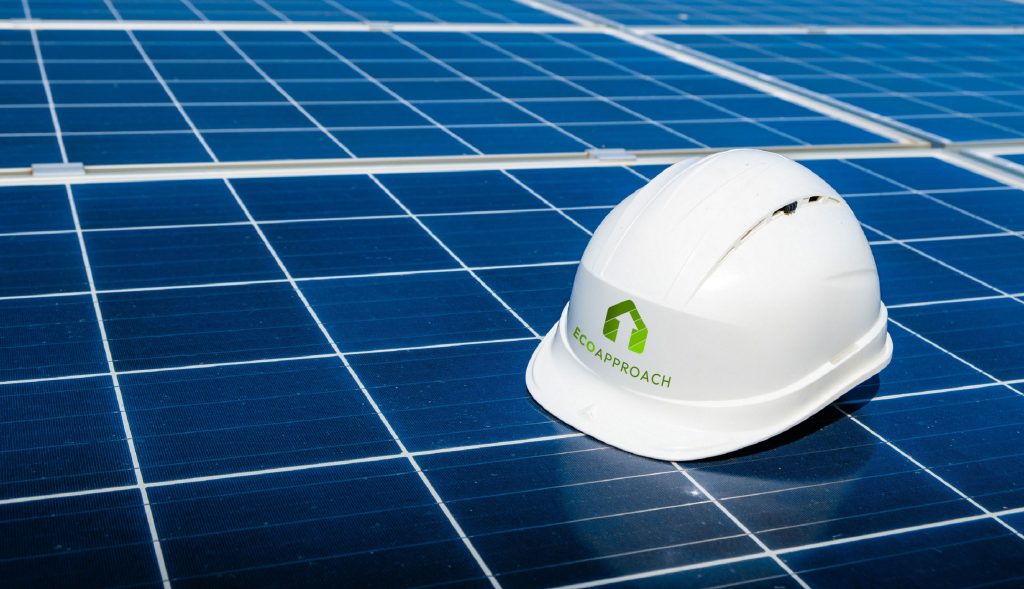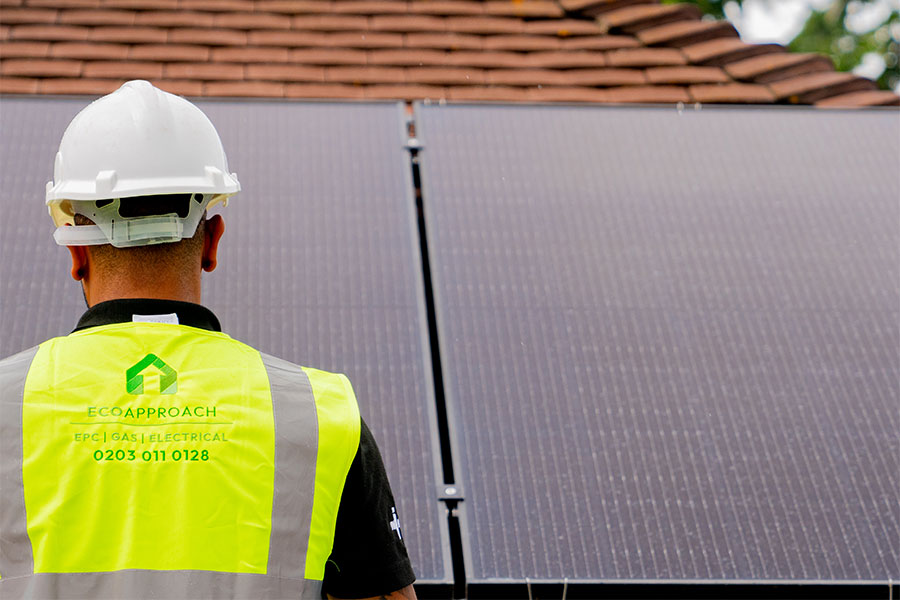The free solar scheme has rapidly become a topic of interest for many households looking to reduce their energy bills and contribute to a greener planet. This initiative aims to make solar energy accessible to a wider audience by eliminating upfront costs, thereby encouraging more people to switch to renewable energy sources.
By installing solar panels at no initial expense, participants can start saving on their electricity bills right away while also reducing their carbon footprint. In this guide, we will delve into the key aspects of the free solar scheme, providing clear and concise information to help you understand how it works, its benefits, and how you can take advantage of this opportunity.
Introduction to the Free Solar Scheme
Why Solar Energy Matters
Solar energy is crucial for several reasons. Firstly, it is an abundant and renewable resource. Unlike fossil fuels, which are finite and contribute to pollution, solar energy harnesses the power of the sun, which is inexhaustible and clean. Secondly, solar energy significantly reduces greenhouse gas emissions.
By transitioning to solar power, households can decrease their reliance on coal, oil, and natural gas, all of which are major contributors to climate change. Additionally, solar energy can lead to substantial financial savings. With lower electricity bills and potential government incentives, households can benefit economically in the long run. Lastly, solar energy promotes energy independence. By generating your own power, you are less affected by fluctuations in energy prices and supply issues. Overall, solar energy aligns with both environmental and economic goals, making it a vital component of a sustainable future.
Basics of the Free Solar Scheme
The free solar scheme is designed to make solar energy accessible without the burden of upfront costs. Under this scheme, solar panels are installed on eligible homes at no initial expense to the homeowner. The costs are typically covered by third-party investors or government subsidies.
In return, homeowners agree to purchase the generated electricity at a reduced rate, which is often lower than their regular utility rate. The scheme usually includes maintenance and monitoring services, ensuring the system operates efficiently over its lifespan.
Participants can expect immediate savings on their electricity bills and a reduction in their carbon footprint. The free solar scheme provides an affordable entry point for households interested in renewable energy, making it easier for more people to contribute to a sustainable future while enjoying financial savings.

Who Qualifies for the Scheme
Eligibility for the free solar scheme varies, depending on specific criteria set by the programme administrators. Generally, to qualify, homeowners must own their property and have a roof that is structurally sound and suitable for solar panel installation.
The roof’s orientation, angle, and exposure to sunlight are critical factors, as optimal sunlight is necessary for efficient energy generation. Some schemes also prioritise households with higher electricity consumption, as they stand to benefit most from the savings.
Additionally, certain income thresholds or geographic locations might be targeted to ensure that the benefits of solar energy reach underserved or high-need communities. It is essential to check the specific requirements of the scheme you are interested in, as these can vary. By meeting the eligibility criteria, homeowners can take advantage of the scheme to reduce their energy bills and contribute to environmental sustainability.
Benefits of the Free Solar Scheme
Cost Savings and Efficiency
One of the primary benefits of the free solar scheme is the significant cost savings on electricity bills. By generating your own solar power, you can reduce your dependence on the grid, thereby lowering your monthly energy expenses.
The electricity produced by the solar panels is often cheaper than the power supplied by traditional utilities, leading to immediate financial savings. Additionally, as energy prices continue to rise, the cost savings from solar energy become even more substantial over time. Beyond just saving money, solar panels are highly efficient, converting sunlight into electricity with minimal waste.
Advances in technology have improved the efficiency rates of solar panels, ensuring that homeowners get the most out of their investment. The combination of reduced energy costs and high efficiency makes the free solar scheme an attractive option for those looking to manage their expenses while promoting environmental sustainability.
Environmental Impact
The environmental benefits of the free solar scheme are profound. By switching to solar energy, households can significantly reduce their carbon footprint. Solar power is a clean and renewable energy source, which means it does not produce harmful emissions or pollutants.
This contrasts starkly with fossil fuels, which release carbon dioxide and other greenhouse gases that contribute to climate change. Additionally, solar energy reduces reliance on non-renewable resources, helping to conserve these finite materials for future generations.
The widespread adoption of solar energy can lead to a substantial decrease in air and water pollution, improving overall public health. By participating in the free solar scheme, homeowners can play a direct role in combating global warming and protecting the environment. Every solar panel installation contributes to a cleaner, more sustainable planet, demonstrating that individual actions can collectively make a significant difference.

Long-term Financial Gains
Investing in the free solar scheme can yield substantial long-term financial gains. While the initial appeal is the lack of upfront costs and immediate savings on electricity bills, the benefits extend much further.
Over time, the cumulative savings from reduced energy bills can be significant. Additionally, solar panels typically have a lifespan of 25 to 30 years, meaning that homeowners can enjoy decades of lower energy costs. Property values also tend to increase with the installation of solar panels, as energy-efficient homes are more attractive to buyers.
Furthermore, some schemes include options to purchase the solar panels at a reduced cost after a certain period, allowing homeowners to fully own the system and reap even greater financial benefits. In essence, the free solar scheme is not just a short-term solution, but a long-term investment in financial stability and sustainability.
Applying for the Free Solar Scheme
Eligibility Criteria
To apply for the free solar scheme, certain eligibility criteria must be met. Firstly, applicants must be homeowners, as the scheme is not available to renters or those in shared ownership properties. The property itself must have a suitable roof, which means it needs to be in good condition, have the right orientation, and receive sufficient sunlight throughout the day.
Additionally, some schemes may have income requirements, targeting low to middle-income households to ensure that those who would benefit most can access the scheme. Geographic location can also play a role, with certain areas prioritised based on local government initiatives or higher solar potential.
Finally, there may be energy consumption thresholds, with preference given to households that use a significant amount of electricity. Meeting these criteria ensures that the solar panels will be effective and that the scheme’s benefits are maximised for eligible participants.
Application Process
The application process for the free solar scheme is straightforward but requires careful attention to detail. Initially, interested homeowners need to fill out an online application form provided by the scheme administrators. This form typically requests basic information about the property, including location, roof condition, and current energy consumption.
After submitting the form, an initial eligibility assessment is conducted. If the property meets the basic criteria, a site survey is scheduled. During this survey, technicians will evaluate the roof’s suitability for solar panel installation, including its structural integrity and sunlight exposure. Once the survey is complete, applicants will receive a detailed proposal outlining the installation plan, expected energy savings, and any terms and conditions.
Upon agreeing to the proposal, a formal agreement is signed, and installation is scheduled. The entire process, from application to installation, usually takes a few weeks, ensuring a seamless transition to solar energy.
Common Pitfalls to Avoid
When applying for the free solar scheme, there are several common pitfalls to avoid to ensure a smooth process.
Firstly, ensure that all information provided in the application is accurate and complete. Incomplete or incorrect information can delay the application process or result in disqualification.
Secondly, carefully review the terms and conditions of the scheme. Some schemes may have hidden costs or obligations that are not immediately apparent. It is crucial to understand the long-term commitments involved.
Thirdly, be cautious of fraudulent schemes. Verify the legitimacy of the programme and the credentials of the installers. Lastly, consider the suitability of your roof. A shady or structurally unsound roof can limit the effectiveness of the solar panels. Conducting a preliminary assessment of your roof’s condition and sunlight exposure can save time and prevent disappointment.
By being thorough and vigilant, you can avoid these pitfalls and successfully benefit from the free solar scheme.
Installation and Maintenance
What to Expect During Installation
During the installation of your solar panels under the free solar scheme, there are several key steps to expect. Initially, a professional installation team will arrive at your property to carry out the work.
They will start by assessing your roof one final time to ensure it is ready for the panels. Next, the team will install the mounting system, which provides a secure foundation for the solar panels.
Following this, the solar panels themselves are attached to the mounting system and connected to the inverter, which converts the generated solar energy into usable electricity.
The entire process typically takes one to three days, depending on the size and complexity of the installation. Throughout the installation, the team will ensure all components are securely fixed and correctly aligned to maximise sunlight capture. After installation, a thorough system check is performed to confirm everything is functioning correctly.
You can expect minimal disruption to your daily routine during this process.

Tips for Maintaining Your Solar Panels
Maintaining your solar panels is essential to ensure they operate efficiently and have a long lifespan. Firstly, keep the panels clean. Dust, leaves, and bird droppings can accumulate and block sunlight, reducing energy production. Cleaning the panels with water and a soft cloth every few months is usually sufficient.
Secondly, regularly inspect the panels and mounting system for any signs of damage or wear. Look for cracks, loose connections, or corrosion, and address these issues promptly.
Thirdly, monitor your system’s performance. Most solar systems come with monitoring software that allows you to track energy production. Any significant drop in output could indicate a problem that needs professional attention. Additionally, ensure that nearby trees or structures do not cast shadows on the panels, as this can greatly reduce their efficiency.
By following these maintenance tips, you can maximise the performance and longevity of your solar panels.
Troubleshooting Common Issues
Even with proper maintenance, solar panels can occasionally experience issues. One common problem is a significant drop in energy output. If you notice this, first check for any obvious obstructions like dirt, debris, or shading from nearby trees.
Cleaning the panels and trimming overgrown foliage can often resolve the issue. Another common issue is loose or damaged wiring. Inspect the connections between the panels, inverter, and your home’s electrical system.
If you spot any frayed wires or loose connections, it is advisable to contact a professional for repairs. Inverter faults can also occur, often indicated by error messages on the monitoring system. Resetting the inverter can sometimes solve this, but persistent issues require professional intervention.
Lastly, weather-related damage such as hail or high winds can affect the panels. Regularly check for physical damage and schedule repairs as needed. By addressing these common issues promptly, you can ensure your solar system remains efficient and reliable.
Real-life Success Stories
Case Study: Urban Households
Urban households have uniquely benefited from the free solar scheme, as demonstrated by a case study in London. The Smith family, residing in a densely populated area, decided to participate in the scheme.
Their roof was assessed and deemed suitable for installation. Within a few weeks, solar panels were installed at no cost to the family. Post-installation, the Smiths noticed a significant reduction in their electricity bills, saving approximately 30% monthly. Moreover, their home’s value increased due to the addition of energy-efficient technology.
The family also took pride in contributing to environmental sustainability by reducing their carbon footprint. The local community benefited as well, with increased awareness and interest in renewable energy spreading among their neighbours.
This case study highlights how urban households, despite space constraints and higher living costs, can effectively utilise the free solar scheme to achieve financial savings and promote green living.
Case Study: Rural Communities
Rural communities have also seen remarkable benefits from the free solar scheme, as illustrated by the experience of the Johnson family in Cornwall. Living in a rural area with ample sunlight, the Johnsons found their property ideal for solar panel installation. Participating in the scheme allowed them to equip their home with solar panels without any upfront costs.
The installation process was smooth and completed within a few days. Following the installation, the Johnsons observed a substantial drop in their electricity bills, saving over 40% each month. Additionally, the reliable solar power helped mitigate frequent power outages common in rural areas.
The family also felt a strong sense of accomplishment, knowing they were contributing to a reduction in greenhouse gas emissions. This case study shows how rural communities can leverage the free solar scheme to achieve significant financial savings, enhance energy reliability, and support environmental conservation.
Lessons Learned from Participants
Participants in the free solar scheme have valuable insights to share. One key lesson is the importance of thoroughly understanding the terms and conditions of the scheme.
Many have found that reading the fine print and asking questions upfront can prevent misunderstandings later on. Another lesson is the value of regular maintenance.
Keeping the panels clean and conducting periodic inspections can significantly enhance their efficiency and lifespan. Participants also emphasise the benefits of leveraging monitoring systems to track energy production and identify issues early.
Additionally, many have found it advantageous to engage with their local community. Sharing their experiences and encouraging neighbours to join the scheme has not only fostered a sense of community but also increased local adoption of renewable energy.
Lastly, participants highlight the importance of patience, as the process from application to installation can take time but is ultimately rewarding. These lessons underscore the practical aspects of maximising the benefits of the free solar scheme.
